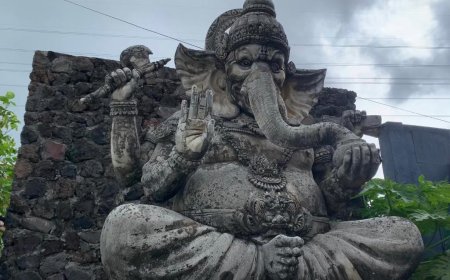Sang Hyang Jaran: Unveiling the Enchantment of Balinese Horse Dance
The Sang Hyang Jaran dance is a traditional Balinese dance that combines mystical and artistic elements with stunning movements. Its main purpose is to repel evil and a means of spiritual communication with the supernatural through the singing of worship songs. This dance creates balance between humans and the spirit world and maintains harmony in everyday life.
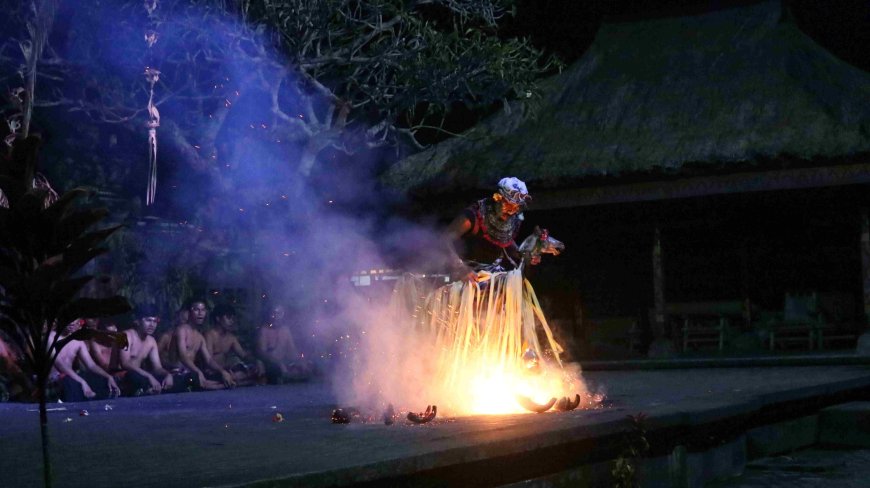
Bali, an island famous for its natural beauty, also has cultural treasures that are no less interesting. One example is traditional Balinese dance which captivates the heart and makes us curious to always watch it, taking us into a rich and enchanting cultural heritage. In this article, we will explore one of the sacred traditional dances in Bali, namely the Sang Hyang Jaran dance.
Sang Hyang Jaran Dance is a traditional Balinese dance full of mystical and beautiful nuances. Sang Hyang Jaran is a unique form of artistic expression and combines spiritual elements with beautiful movements. A unique blend of art and spirituality that has been passed down from generation to generation, enriches Indonesia's cultural richness.
The Sang Hyang Jaran dance is believed to have existed since Hinduism had not yet arrived in Bali. So this is the primitive Balinese culture that still exists today. The Sang Hyang Jaran dance is a legacy of Ida Pedanda Gde Punia from Geria Bangli, who in ancient times was exiled (banished) to Nusa Penida, specifically Jungut Batu Village) by the King of Bangli who was in power at that time.
Sang Hyang Jaran dance has the main purpose as a form of repelling reinforcements in the Balinese tradition. This dance is a means of spiritual communication that connects residents with the supernatural through sung songs of worship. Through this dance, they seek protection and blessings from Sang Hyang Jaran, thus creating a balance between humans and the spirit world, as well as maintaining harmony in everyday life.
In this Sang Hyang Jaran Dance performance or performance, the main dancer rides a wooden horse decorated with beautiful colors and ornaments. This wooden horse represents sacred beings who carry messages from the spiritual world. This dance is often performed in the context of religious ceremonies, such as in piodalan (offering) celebrations at Balinese pura (temples).
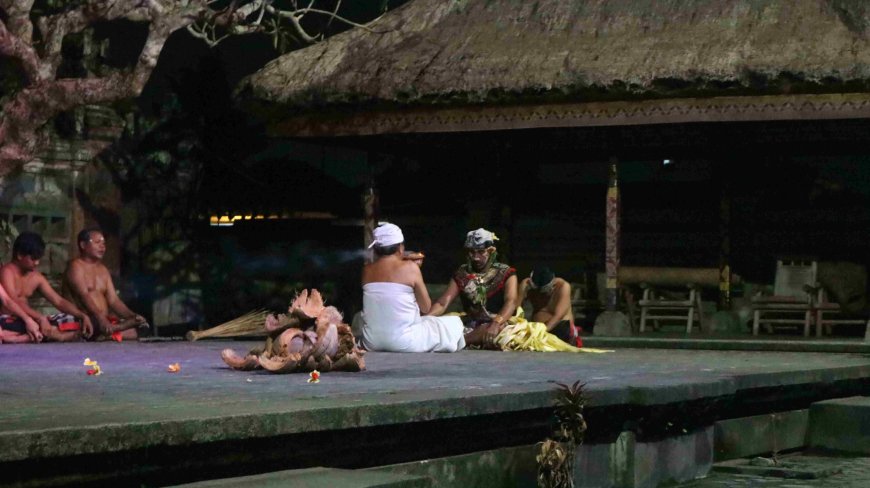
Dancers Prayed by Mangku (Photo Source: Editorial Collection)
The Sang Hyang Jaran dance begins with a prayer offered by a mangku, a holy person or spiritual leader in Hinduism in front of the dancer. This prayer has the aim of asking for blessings and protection from the spirits who will come to inhabit the dancer. After the prayer, the dancers begin to prepare themselves to perform the Sang Hyang Jaran dance. In this process, the dancer is slowly possessed by the spirits who will become the "horse" riders in the performance. The dancer will begin to feel changes within himself, becoming a kind of intermediary between the human world and the spirit world. Dancers can feel the presence of these spirits and are ready to act.
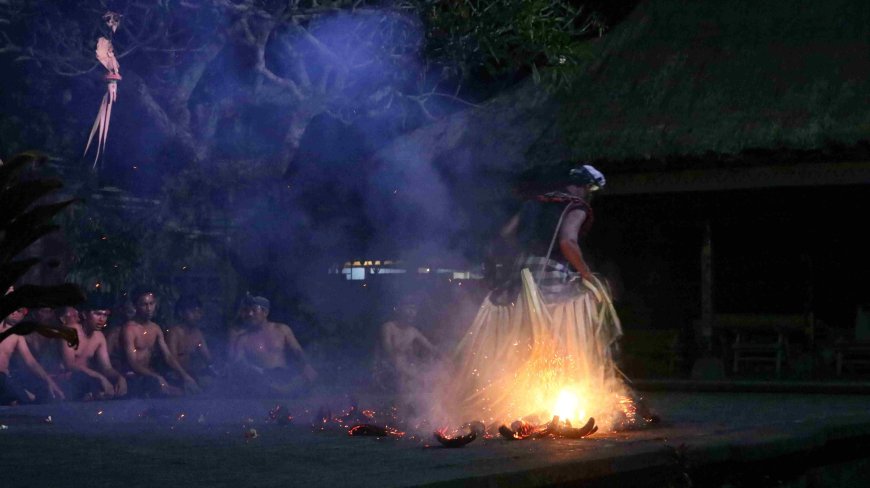
Dancers Passing Through the Embers (Photo Source: Editorial Collection)
After being possessed by the spirits, the dancer begins the main performance by riding a "wooden horse" with incredible speed and courage. Their movements reflected the horse's strength and grace that seemed to live within them. Dancers are able to jump high, spin, hold, and even pass through burning coals without getting burned or injured. This is the time when the connection between the dancers and the spirits reaches its peak, creating an enchanting and mysterious performance.
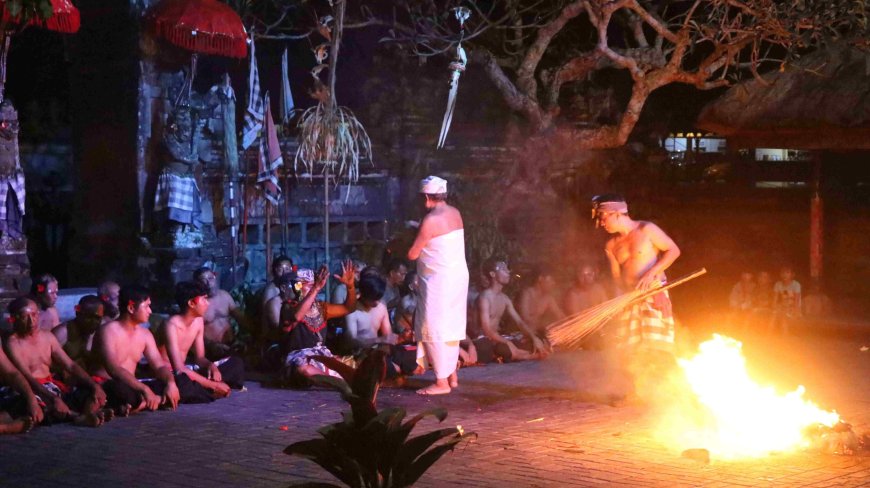
Dancers Are Given Tirta by Mangku (Photo Source: Editorial Collection)
Once the performance reaches its climax, it takes someone else to stop the dancers. The dancers cannot control themselves because they are still under the influence of the spirits. The role of mangku is needed during this procession. He performs other prayers and gives tirta (holy water) to the dancers. This tirta serves to release dancers from the influence of spirits that dominate them during performances.
Magic and mysticism in the Sang Hyang Jaran Dance is not just a mere decoration or tradition, but an inseparable part of the Sang Hyang Jaran Dance. This helps maintain the connection between humans, spirits and the universe that is so strong in Balinese culture. The Sang Hyang Jaran dance is not just an ordinary dance performance, but also a sacred dance with deep spirituality. For those who witness it, this dance often conveys a sense of admiration for Balinese culture and beliefs which are rich in symbolism and deep meaning.
In its journey, the Sang Hyang Jaran dance has developed and become more than just a ceremonial dance. Now, this show has also become a cultural attraction that entertains tourists who come to Bali. Although it has undergone an evolution in its context, the Sang Hyang Jaran dance has retained its spiritual roots and deep meaning, making it one of the most revered and valued traditional dances in Bali.



















































